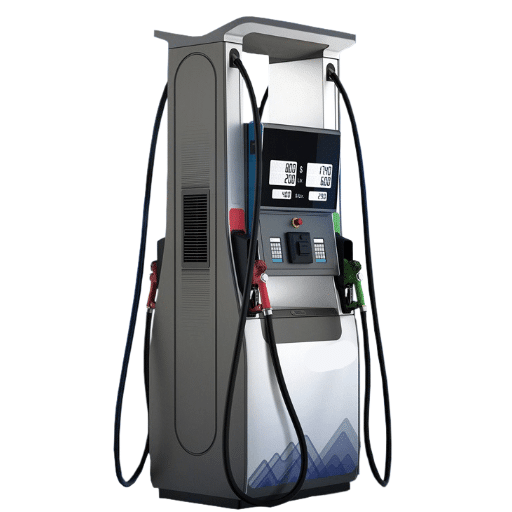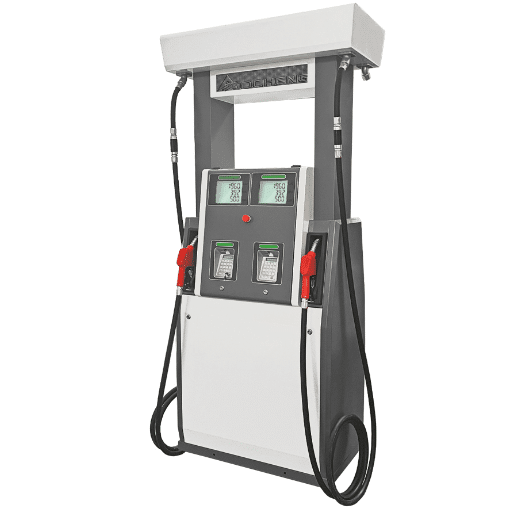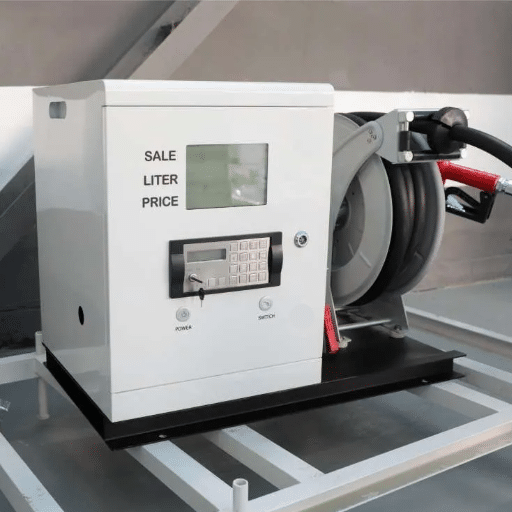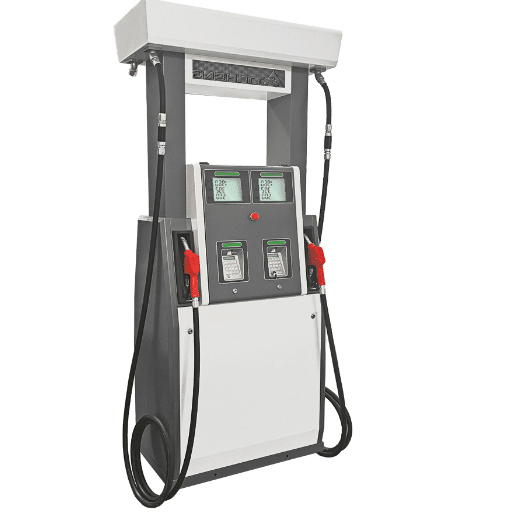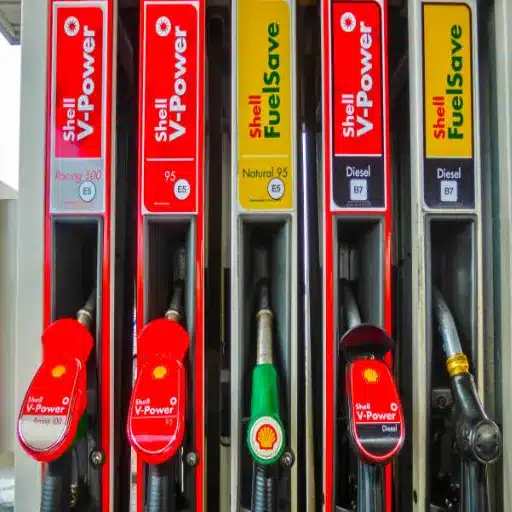Interspersed with refuelling queries comes peculiar wit: How does the pump know when to stop before the gasoline is spilled out? It appears magical, but in reality, a very fine balance between physics and engineering is at play. Knowing how this mechanism works opens up an interesting window into everyday technology. This paper will delve into the inner workings of gas pumps, deciphering sensors and principles that automate the fuel-query procedure. This text serves to satiate some curiosity and provide an engineer’s perspective on just how reliable and efficient gas pumps really are.
Understanding the Gas Pump Mechanism
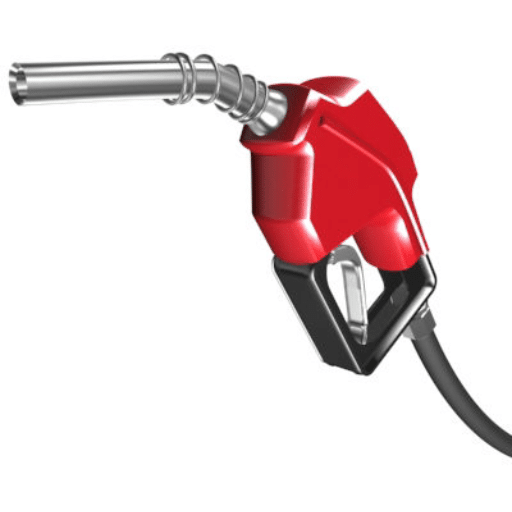
Gas pumps, in combination with simple physics and advanced sensing technologies, provide their service. After the handle is lifted and the fuel grade is selected, an electric motor is activated to draw fuel from the underground tank and deliver it into the vehicle. Inside the pump, a flow meter measures the exact quantity of fuel being dispensed so that accuracy may be maintained.
Nozzles contain a small venturi-type mechanism that detects when the fuel tank is getting full. This mechanism works by sensing changes in pressure inside the tank and then uses these pressure changes as inputs to trigger the nozzle shut-off mechanism, thereby preventing overflow. Also, modern pumps have electronic systems that act to monitor and control the flow of fuel quite efficiently and safely.
How the Fuel Pump Works
Here we observe that the fuel pump is the very heart of a fuel delivery system, transferring fuel from the tank into the engine through precise pressure regulation. An electric fuel pump today is usually inside the fuel tank, containing a small motor that turns the impeller to draw fuel through a filter and into the fuel lines. This pressure ensures proper atomization of fuel into the engine for combustion with minimal loss of fuel through the injection system. Integrated check valves stop any potential backflow through the system, while pressure relief valves keep the pressure from becoming dangerously high. Some advanced pumps even offer engine diagnostics that allow for the declaration of a malfunction of the pump, and improved reliability, hence improving safety standards.
Components of a Gas Pump
Several key components of a gas pump work in unison to ensure that fuel delivery is successful. The major components of a gas pump are:
- Nozzle: The nozzle contains a shut-off mechanism that stops the flow of fuel when the tank is full. A vacuum sensor detects back pressure and stops the flow automatically before any overflow can occur.
- Display System: The display interface displays information to the user relating to how much fuel is dispensed and the total cost. Hybrid digital displays in modern-day pumps ensure accuracy and user friendliness.
- Flow Meter: A flow meter ensures the accurate measurement of fuel that passes through the system for billing purposes and regulatory requirements.
- Pump Motor: The motor drives the pump that pumps fuel from the underground tanks and dispenses it through the fuel hose to the nozzle.
- Fuel Hose: The fuel hose is a conduit for fuel and is therefore subjected to reinforced and durable treatment intended to withstand high-pressure flow and environmental situations.
- Vapor Recovery System: Found in many present-day pumps, the system captures vapors that are released when fueling, thus reducing emissions into the atmosphere while conforming to environmental standards.
In conjunction, these components increase the operational efficiency, safety, and reliability of the gas pump; they are, in fact, an integral element of modern fuel distribution systems.
The Role of the Nozzle in Fuel Dispensing
Making for a very important interface between the gas pump and the vehicle’s fuel tank for timely and precise fuel delivery, the nozzle is equipped with a flow control mechanism to allow the user to regulate the fuel output. The pressure-sensitive automatic shutoff system in the nozzle reacts to a full tank by sensing changes in the back pressure, stopping fuel flow from that moment onward to the detriment of overfilling and causing spills.
Modern nozzles come with advanced vapor recovery controls, which help capture fuel vapors and return these vapors to the pump system during refueling; this serves to minimize emissions into the atmosphere and comply with very stringent regulatory norms. Constructed to withstand everyday operational stresses with utmost safety and reliability, nozzles become a component of and contribute to the overall performance of the fuel-dispensing system.
Automatic Shut-Off Features
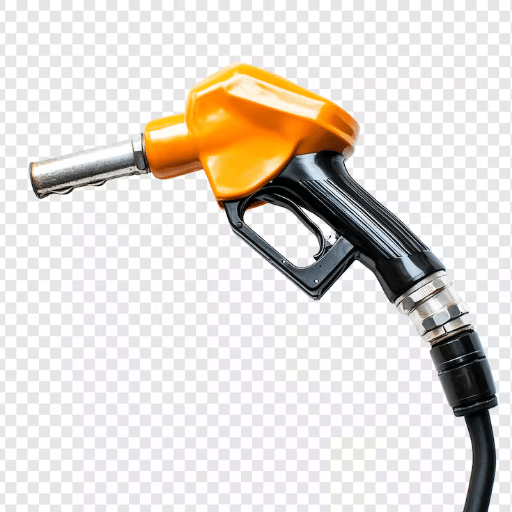
Automatic shut-off capabilities in fuel nozzles inhibit overfilling by closing the nozzle once the tank is full. It operates through a little venturi tube that senses a drop in air pressure as the liquid fuels increase. When the nozzle senses that the tank is full, airflow decreases, and the valve shuts off the delivery of fuel. This promotes accurate filling on the safer side, where spills are reduced while protecting the environment by reducing fuel wasted.
How Automatic Shut-Off Mechanisms Operate
Together with fluid dynamics and mechanical engineering principles, the nozzle fluid pump realizes an anti-overfilling system. The system centers on a venturi tube that creates a pressure difference as fuel flows down the nozzle. The tube then connects to a sensing port near the nozzle’s tip. The fuel level rises to cover the sensing port that blocks atmospheric air from flowing into the venturi tubes, causing a pressure drop. That creates a pressure difference across a diaphragm or mechanical linkage that, triggering its actuation, closes the valve inside the nozzle to stop fueling almost instantly. This very accurate and reliable design implements the refueling process by responding immediately to the fuel level, thus reducing spillage, improving operational safety, and sparing the environment from unnecessary fuel emissions.
Importance of Shut-Off Valves
Shut-off valves ensure that fuel systems and other fluid-transfer mechanisms are handled safely and effectively. These valves are intended to stop the flow of fuel or liquid under certain conditions sensed by the valve itself-a tank overfilling condition, pressure irregularities, or a malfunctioning system. This ability to stop the flow minimizes accidents, fuel spillage, and hazards caused due to overflow protection of persons, equipment, and the environment. Secondly, they are vital for regulatory compliance in industries dealing with hazardous substances as they cut emissions and waste. Today, contemporary shut-off valves have been developed with the assistance of pressure sensors and advanced fail-safe technology, thereby elevating their accuracy and reliability, making them an indispensable component in every industry from automotive to chemical processing.
Safety Measures in Gas Stations
Gas stations do a lot to institute safety measures that ensure that customers, employees, and the environment are safeguarded against possible hazards. One such important measure is proper signage involving instructions on safe fueling practices or banning smoking near the fuel pumps, as well as emergency procedures. Fire suppression systems-good automatic fire extinguishers and flame detection sensors-serve to alleviate the risk of fuel ignition. Emergency shut-off switches are, therefore, installed at gas stations that can be used by the operator to immediately cut off fuel flow in the event of leakage or spillage.
Proper upkeep of fuel tanks, pipes, and dispensing equipment is also essential to avoid leaks and contamination. A downspill containment system includes spill basins with absorbent pads to minimize accidental fuel spills. Many stations ensure proper ventilation to reduce flammable vapor concentration buildup. Finally, training constitutes a significant ingredient for the staff to know how to handle hazardous materials, respond to emergencies, and comply with regulatory safety standards. When combined, these measures create a safer environment for all present at the station.
Safety Features of Gas Pumps
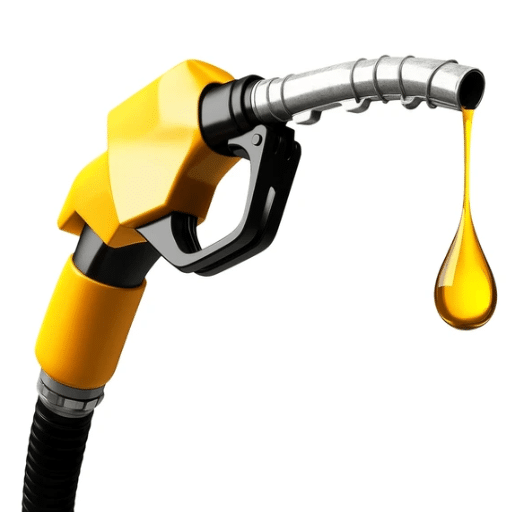
Gas pumps are installed with a series of safety measures to protect the user and the environment. The automatic shutdown stops the pump once the tank is filled with fuel, thus averting spillages and consequent hazards. The vapor recovery system captures fumes in the refueling process to curb harmful emissions. Emergency shut-off switches are installed across stations for emergency use, so one can stop the pump immediately. Gas pumps also serve to ground static electricity so that the build-up can be discharged without a spark during fueling. Together, these features promote safety and efficiency at fuel stations.
Preventing Overfilling of Tanks
Overfilling tanks should be prevented to safeguard life and remain environmentally compliant. Most current systems to dispense fuel have automatic shut-offs that stop fuel flow once the tank is filled up. They may be using a float valve or pressure sensor to sense the level, so the discharge does not occur. In this way, tank monitoring systems or overfill prevention systems measure liquid levels in real time, enabling early intervention and drastically reducing the possibility of overfilling. Operators are trained in safe fueling practices, including the mechanics of not overriding the automatic shut-off, as a further safeguard. Based on regulating standards, storage tanks are required to have overfill protection methods such as alarms and secondary containment to ensure compliance and limit environmental risk.
Design Considerations for Gas Stations
The design of a gas station must have special attention paid to functionality, safety, and, of course, efficiency. Considerations are mainly focused on the layout of fuel pump islands in order to maximize the flow of traffic and reduce congestion. A typical layout offers free entry and exit points for small vehicles entering from one side and large transport trucks entering from another. Storage tanks for fuel are required to be underground by law, along with containment systems to prevent these tanks from leaking into the earth or causing environmental contamination.
Also, ventilation and fire safety are two very important aspects involved in gas station design. Streets must be kept free to allow for emergency access, and one must install the fire suppression system and the explosion-proof electrical fixtures in the pump area. Further, it is important to provide for signs and lighting inside and out that will improve visibility and guide the customers, with slip-resistant surfaces for walkways, ensuring pedestrian safety.
Sustainability has to be the other important design consideration, whereby all of the modern gas stations indeed bring in energy-saving technologies that include the lighting system of LEDs, solar panels, and water-recycling systems. The integration of convenience stores will respond to the market demand for additional services and, therefore, require the consideration being given to the location of the store entrance near the fueling areas for the convenience of customer access. Consideration of all these factors lends itself to the assurance of safety during operations, customer satisfaction, and conformance to environmental and industry standards on the gas station scale.
Implications of a Malfunctioning Pump
A compromised fuel pump brings operational hitches, monetary inconveniences, and risk prospects for owners and end-users. From an operational standpoint, late service because of a faulty pump dents customer satisfaction; sometimes it can even damage the name of that pump. Each stoppage directly involves revenue lost, plus increased costs of maintenance or repair. These pumps also have their share of inaccuracy rates: over-dispensing, under-dispensing, and so on, to find more causes of monetary discrepancies. In terms of safety, defective pumps may be a potential cause for fuel spills, leaks, or even fire-hazard-wrecking damages to their employees and patrons. Time-bound maintenance and inspections after relevant safety regulations are all to keep such risks away and improve operational efficiency with a smile.
When Does the Pump Know to Stop Filling?

The pump helps to stop the flow through a mechanism called automatic shut-off. When fuel flows into the tank and reaches the level of the nozzle tip, the airflow to this hole is blocked. This causes the pressure to change, and this change in pressure activates the shut-off valve, stopping the flow of fuel. This is a safety procedure so that the tank will not overfill and so there will be fewer chances of spilling.
Indicators of a Full Tank
Several prominent indicators highlight efficient and accurate refueling when a tank is full. Perhaps the most visible is the activation of the nozzle’s automatic shut-off feature, which stops fuel flow as soon as it reaches capacity. Also, a properly functioning fuel gauge will show a full reading inside the vehicle, indicating that no further fuel is needed. Drivers may hear a difference in flow sounds as the fuel rhythmicism often fades into faintness. From a visual perspective, once the fluid is seen to spill or overflow near the nozzle, it indicates an overfill situation-a scenario rarely disregarded these days by modern systems and proper refueling techniques. The confluence of these indicators is meant to provide clear feedback to prevent overfilling and secure base safety measures during the refueling process.
How Gas Flow is Monitored
There are systems for monitoring gas flows: mechanical and pressure, the latter being incorporated directly inside the fuel pump. Within the nozzle lies a small hole connected to a vacuum sensor. Energy transfer in the pistons air displaced within the fuel tank, and air exits through the nozzle. When fuel has filled the tank up to the brim, air flow is blocked, and a pressure change is created, which acts as a signal for the nozzle to automatically shut off. And then fuel flow rates and pressure levels are measured by sensors embedded in modern fuel pumps to ensure accuracy and safety. These systems are designed to detect global flow irregularities like blockage or overflow and try to prevent hazards during refueling.
Factors Affecting Pump Shut-Off Timing
Several key factors influence the shut-off timing of the certification-type fuel dispenser. First, the position of the nozzle in the fuel tank is one important factor. For germane relevance, if inappropriately shallow, with turbulence or splash-back near the nozzle sensor, it might cause a premature shut-off. Second, fluctuation of flow rates sometimes creates inconsistencies in shut-off times. For example, a high flow rate creates a big pressure drop that shortens the time for the automatic mechanism to activate. Venting of the tank, thirdly, has a bearing on air pressure variations in the fuel tank. Hence, if the venting system is not well-vented or blocked, the automatic shut-off mechanism may either be late or early, simultaneously. It is an important consideration in ensuring that refuelling is done timely and safely.
Common Issues with Gas Pump Shut-Off

| Issue | Description | Solution |
|---|---|---|
| Blocked Vent Lines | Blockages in the venting system obstruct air release from the tank, thus activating premature shutting-off. | Regular maintenance of vent lines helps prevent this problem. |
| High Fuel Flow Rates | Too high a flow rate in the tank causes turbulence, which virtually becomes the false triggering of the automatic shut-off device. | Setting the pump for the lower flow rate minimizes this problem. |
| Breaking Down of Nozzle Sensors | When wear away or damage to the sensing mechanism of the nozzle occurs, incorrect behavior occurs in the shutting-off. | Replacing or fixing any worn-out or defective nozzles makes them work correctly. |
| Incorrect Tank Positioning | If the truck or tank openings are badly aligned, then the pump will be unable to sense the actual fuel level, and it will shut off prematurely. | Proper alignment during refilling can remedy this condition. |
Reasons for Malfunctioning Automatic Shut-Off
Disrupting Low Flow Rates
When refueling is done with a very low flow rate, the nozzle may not have the proper pressure balance, which results in a shut-off acting too soon. Ensuring that a proper flow rate is maintained during refueling should serve to prevent this problem.
Ventilation Blockages
Restrictions or blockages in the vehicle’s fuel tank ventilation system can cause pressure build-up, which disturbs the nozzle shut-offs as a fuel level detector. Inspection and cleaning of the venting system are necessary to prevent this from happening.
Fuel Foam
The formation of foam in the tanks for various types of fuel or by aggressive fueling operations can lead to an erroneous triggering of the automatic shut-off. Intermittent pauses during fueling may assist in reducing foam build-up.
This list highlights other technical causes that may create disruptions in refueling, once again stressing the importance of equipment maintenance and good fueling practices.
What to Do When a Pump Doesn’t Stop
If the pump keeps running during refueling, the first thing is to keep cool while acting fast to avoid spilling any fuel. I immediately release the pump’s trigger manually to stop the flow of fuel. If the problem continues, I will let the station attendant or management know about it and have the pump checked and repaired. Also, check for any warning signs in the area regarding previously known problems with the pump.
Maintaining Your Fuel System
Your fuel system makes a big difference in the performance of your vehicle, and keeping it maintained is an expensive job. Essentially, you must ensure there are no leaks or any damage needing repair. Check if the fuel filter has been changed as per the manufacturer’s guidelines, and keep the fuel injectors clean, avoiding any clogging that may impede fuel delivery. The use of good-quality fuel keeps the buildup of contaminants at bay, which would otherwise restrict system performance. Observe the fuel pump’s operational behavior to detect any irregular or unusual sounds, and check if the fuel delivery seems low; these signs may well prove to be early symptoms of malfunction. When in practice, these will ensure a longer lifetime for your fuel system and better reliability for your vehicle.
Reference Sources
“Consumer Protection Related to Dispensing Pump Manipulation in SPBU (Gas Station)”
“Comparison with Classification Algorithms in Data Mining of a Fuel Automation System’s Sales Data”
“Evaluation of the Internal Control System for Inventory at UD Nina Usman SPBU”
Frequently Asked Questions (FAQs)
How Does the Gas Pump Know When to Stop?
There exists a type of automatic shut-off mechanism included on the gas pump that allows it to know when to stop pumping. This mechanism is housed inside the pump nozzle and consists of a vertical tube whose level is detected once gas is further pumped into the tank. When the gas level rises to a certain point, it produces a vacuum that activates the valve, thus shutting off and stopping the flow of gasoline.
What Kinds of Mechanisms Cause the Automatic Stop of the Gas Pump?
The mechanism that causes the automatic stop of the gas pump is based on the principle of the venturi effect. When the gas tank fills up, the flow of gas through the small tube in the nozzle decreases, and air is sucked in through a tiny hole. Being a change in pressure, it then creates a vacuum that instructs the pump to stop pumping.
How Does a Gas Nozzle Fill Your Tank?
Gasoline nozzles are designed with flow control to provide efficient filling for your tank. Gasoline flows through the nozzle once it’s been inserted inside the fuel system of the car and the trigger has been pulled. Upon nearing the capacity of the tanker, the flow is stopped automatically, preventing overfilling.
What Happens When the Gasoline Level Goes up in the Tank?
As the gasoline level rises in the tank, the gas pump nozzle senses the pressure. When the tank is full, the flow of gas is interrupted, which results in air being sucked in through that tiny pipe, triggering the shut-off mechanism, thus shutting off the pump before any fuel spills.
Can the Gas Pump Know When to Stop Pumping Gas?
Yes, in other words, the gas pump knows when to stop pumping gas because it possesses an automatic shut-off design. This system requires the flow of gas and a drop in pressure in the gas line as the tank fills. The moment the tank reaches its maximum capacity, the vacuum created due to the rising fuel level calls for the shut-off of the pump.
What Does the Small Tube in the Pump Nozzle Do?
The small tube in the pump nozzle allows air into the nozzle when the gas tank is full, disrupting gasoline flow. This action causes the creation of a vacuum that signals the valve to shut, thus stopping the flow of gas into your car.
Why Does the Small Hole Matter in the Gas Pump Nozzle?
The tiny hole in the gas pump nozzle is used to create a vacuum effect. The moment that the gas level in the tank rises to a level where this hole gets covered, the flow of gasoline is interrupted. Again, the pumps stop automatically to prevent spilling over, thus making it a safe refueling operation.
How Does the Pump Shut-Off Prevent Overfilling?
A pump shut-off was created with the intent to stop any overfilling by being alert to the gas flow. Now, when the tank is more or less full of gas, the rising gas level triggers a suction effect, whereby the automatic shut-off takes place. This safety feature ensures that you can go on filling your tank with no worries about spilling any petrol.

